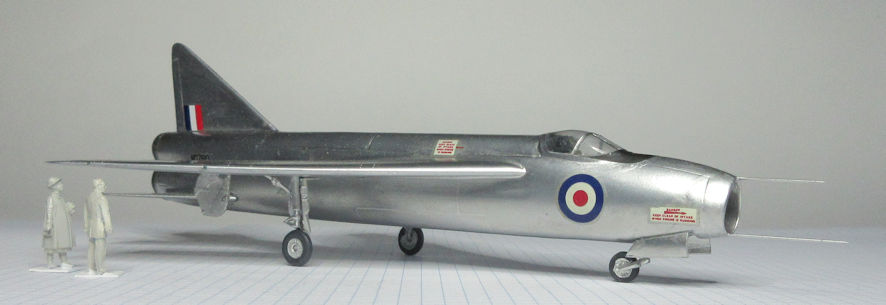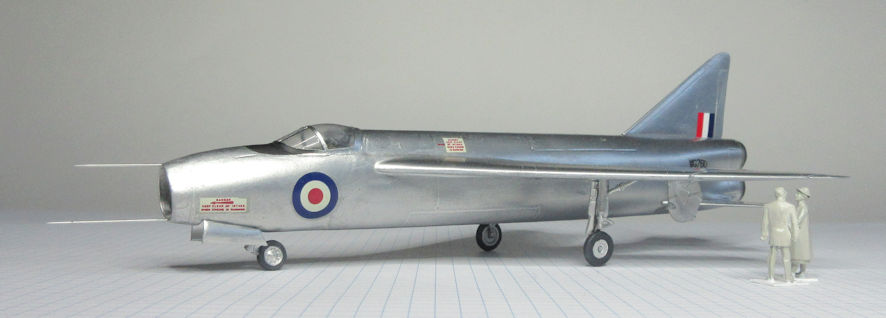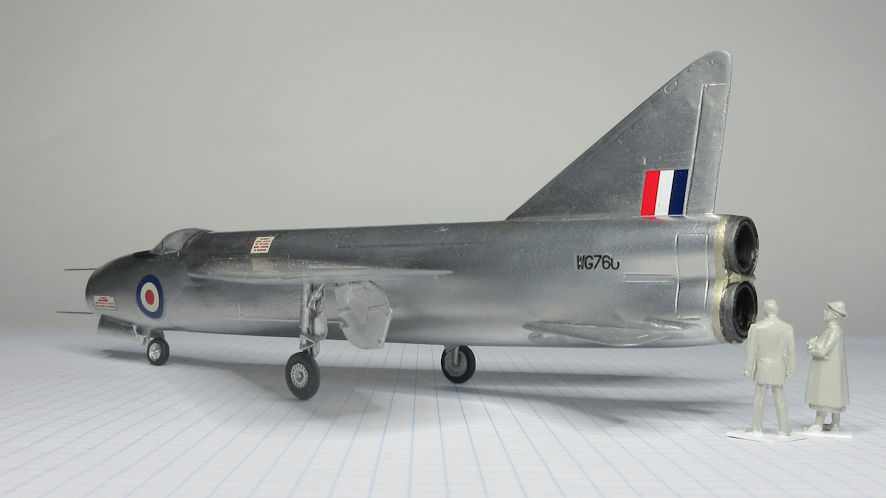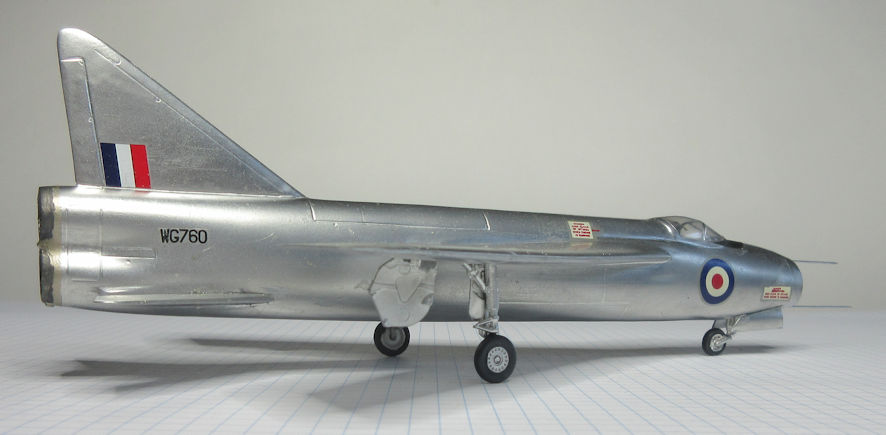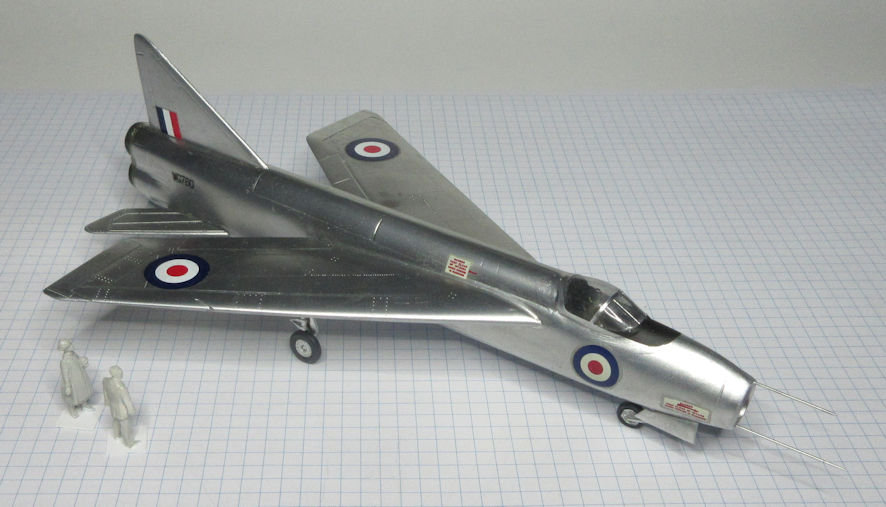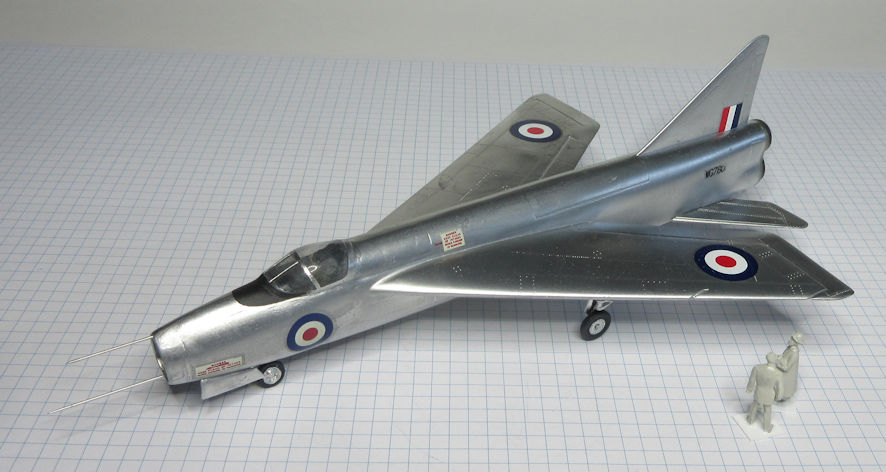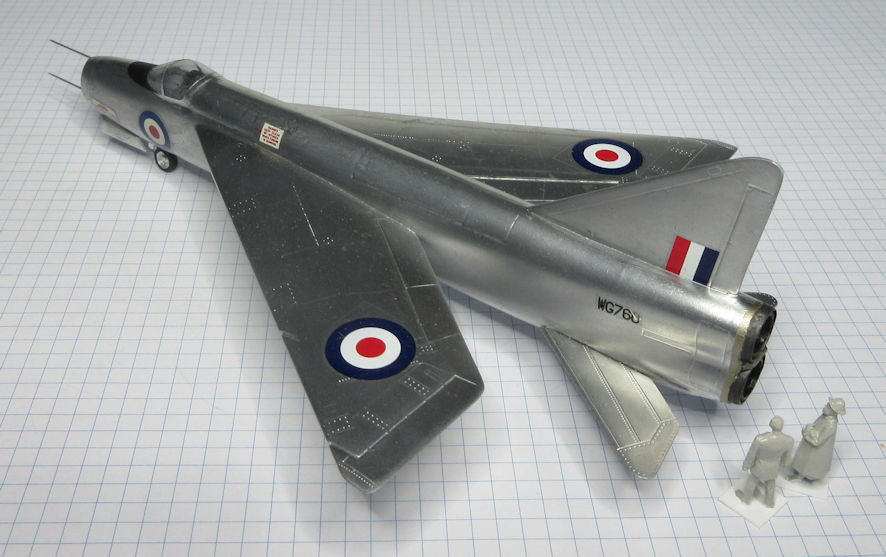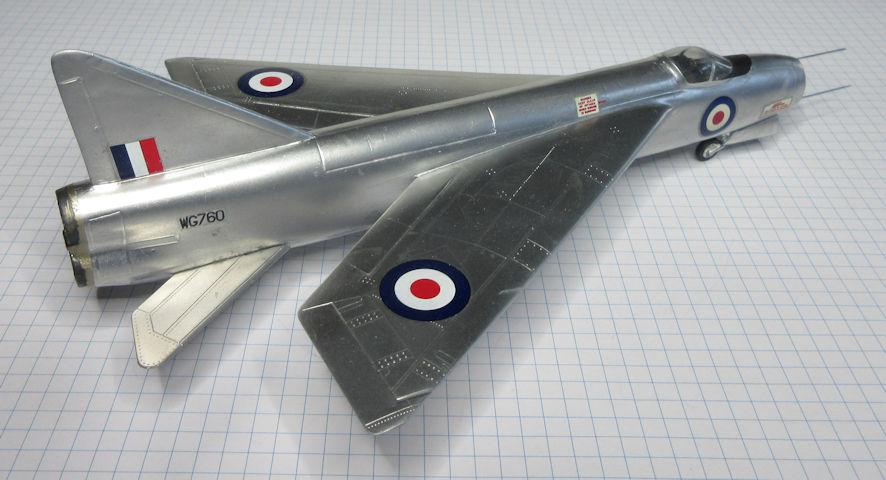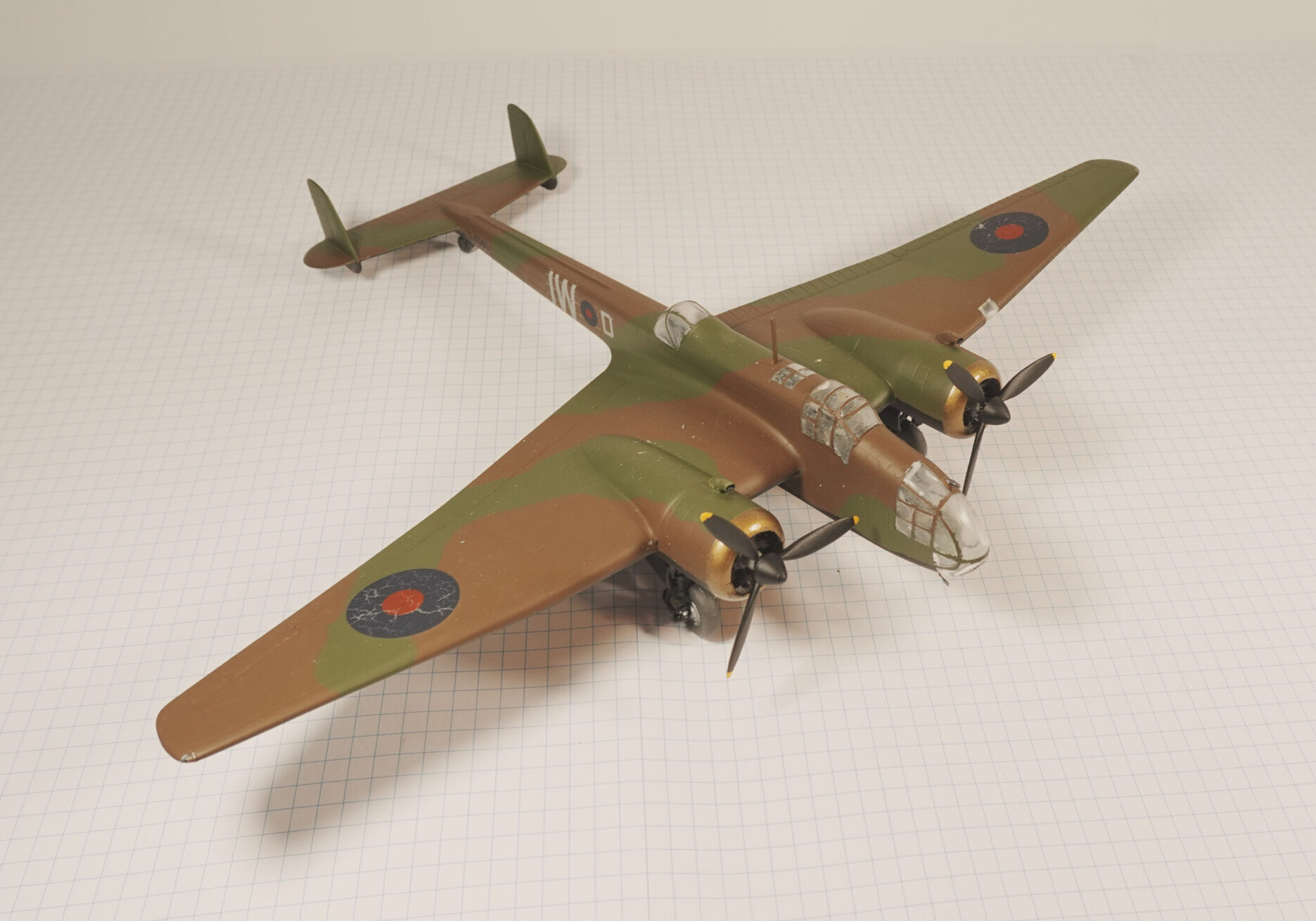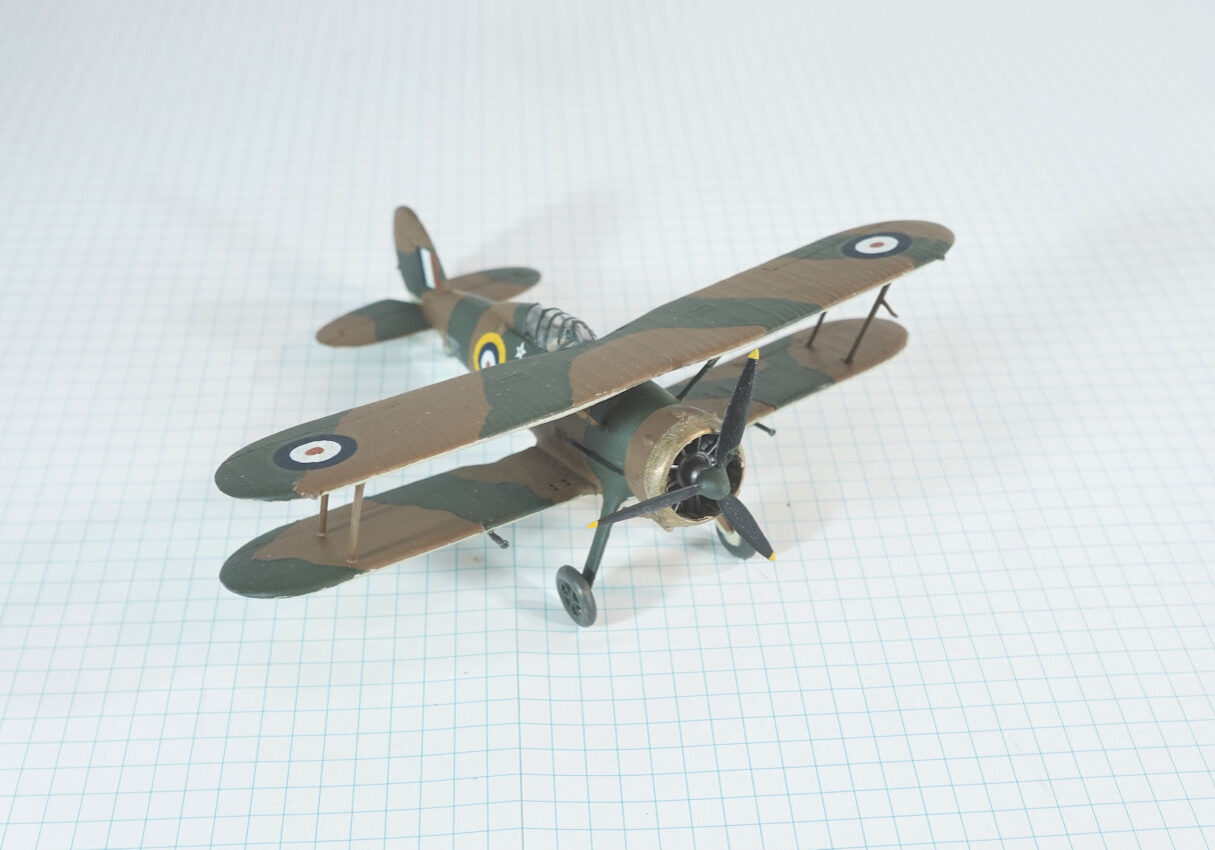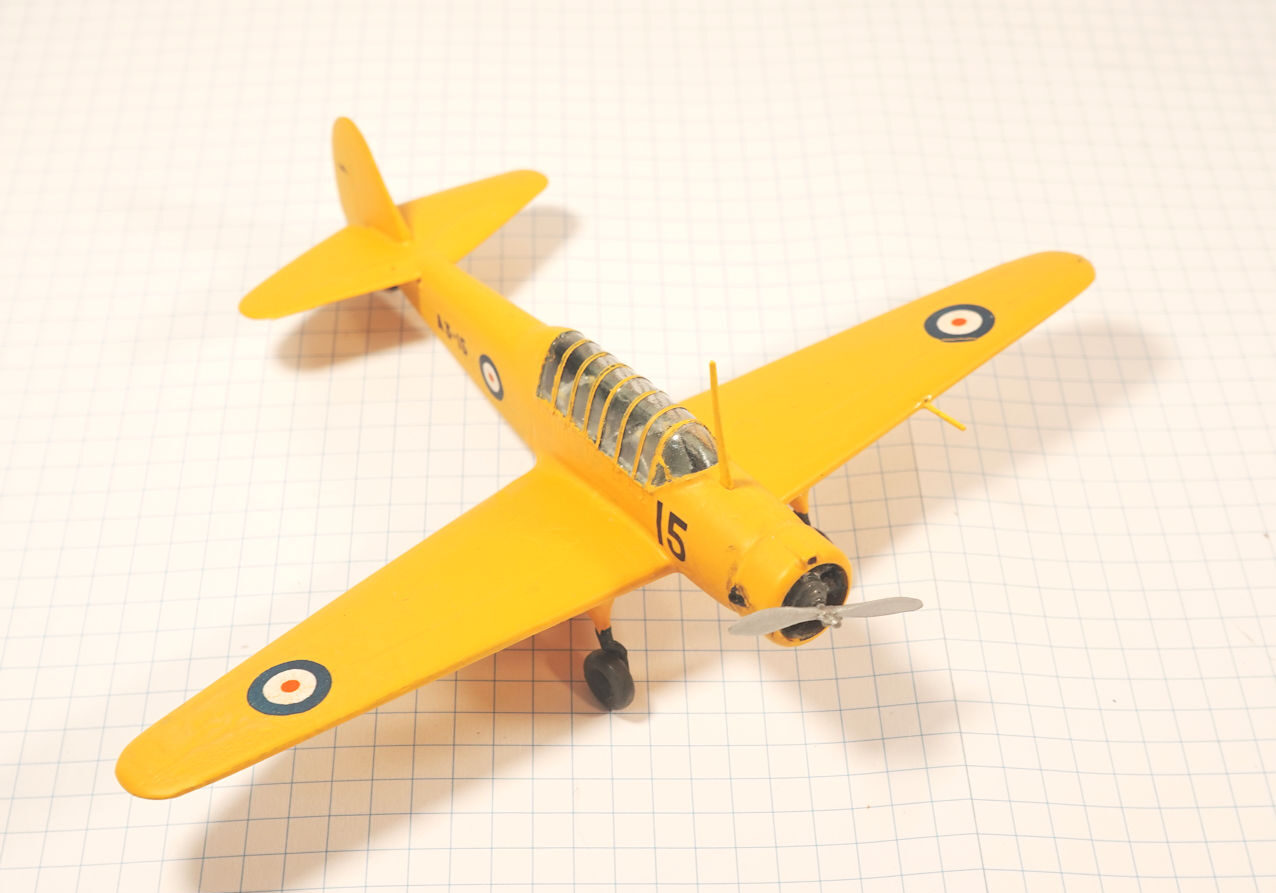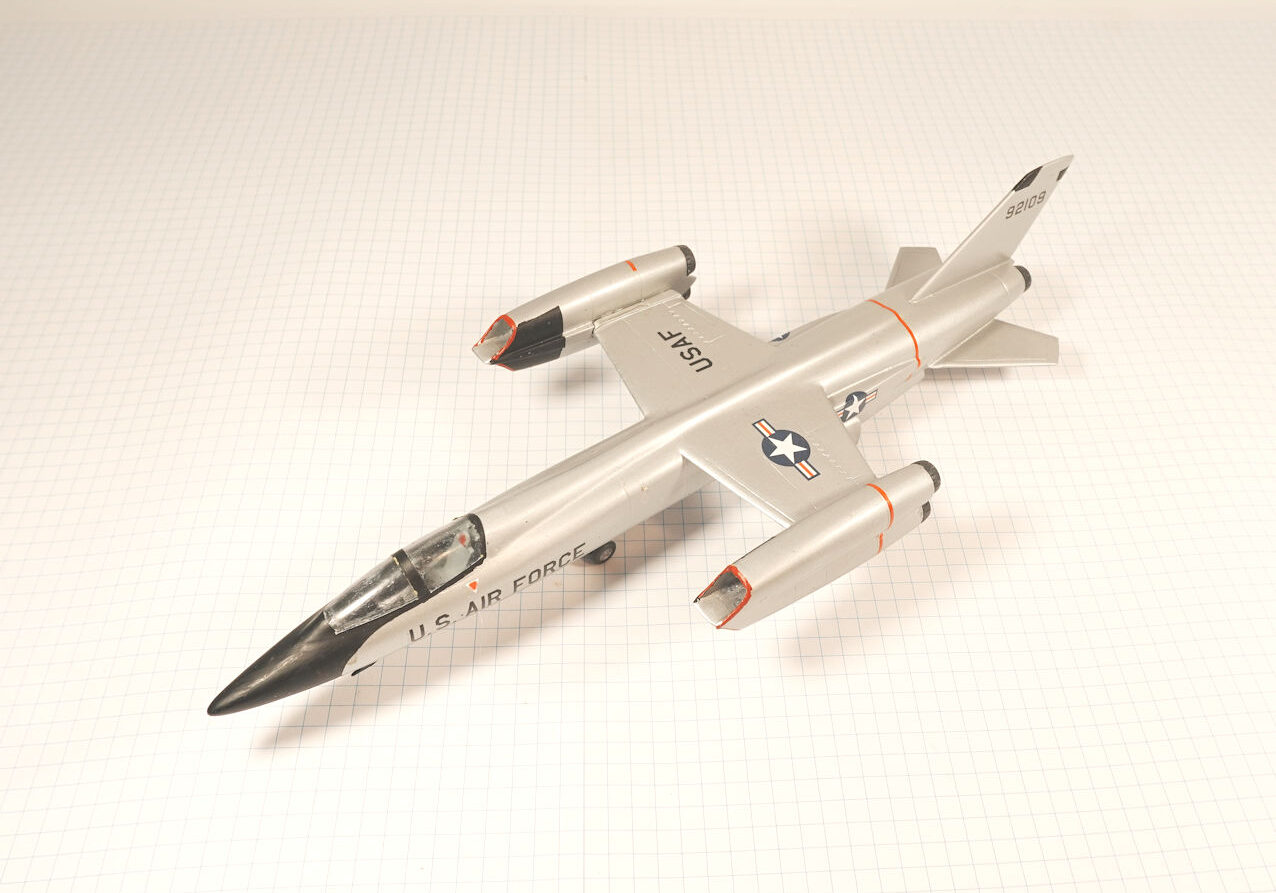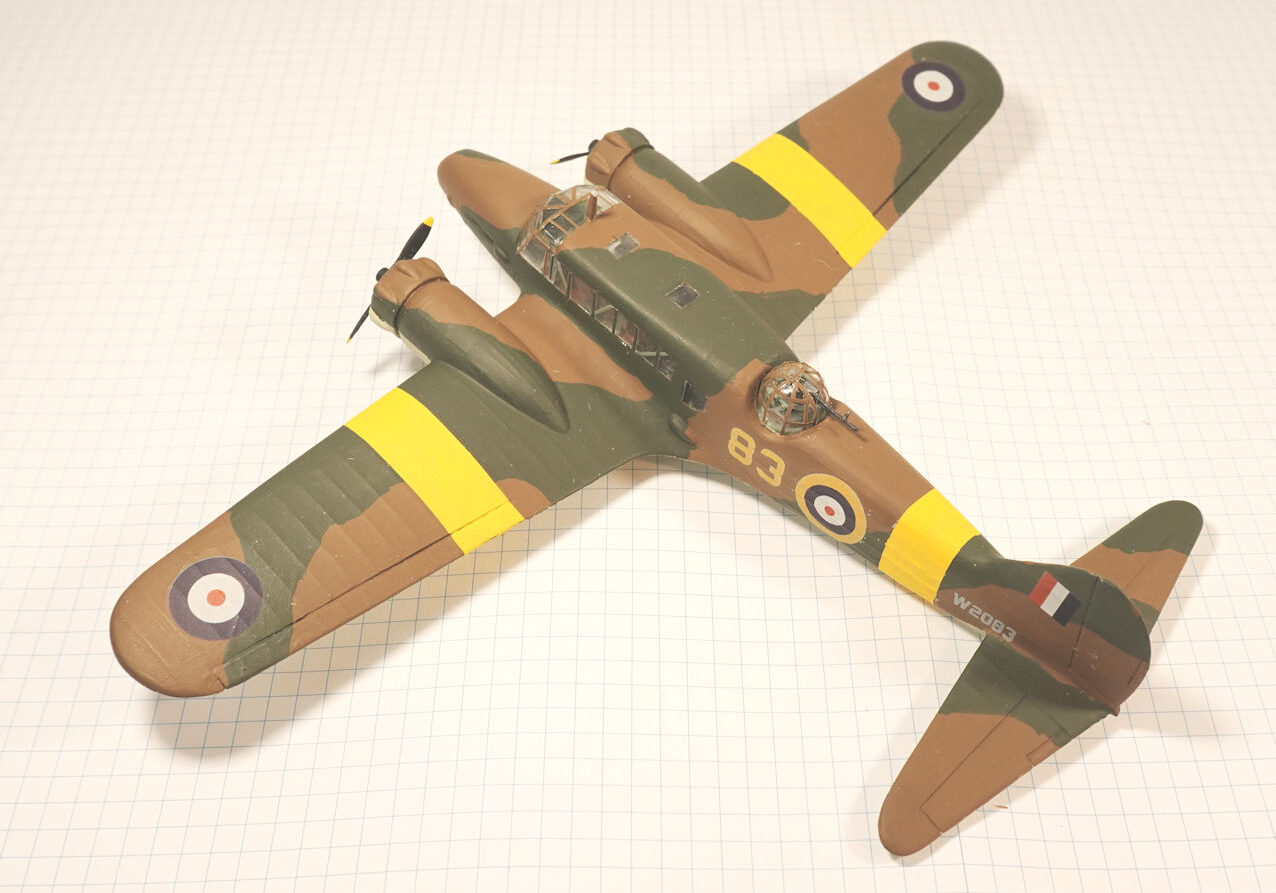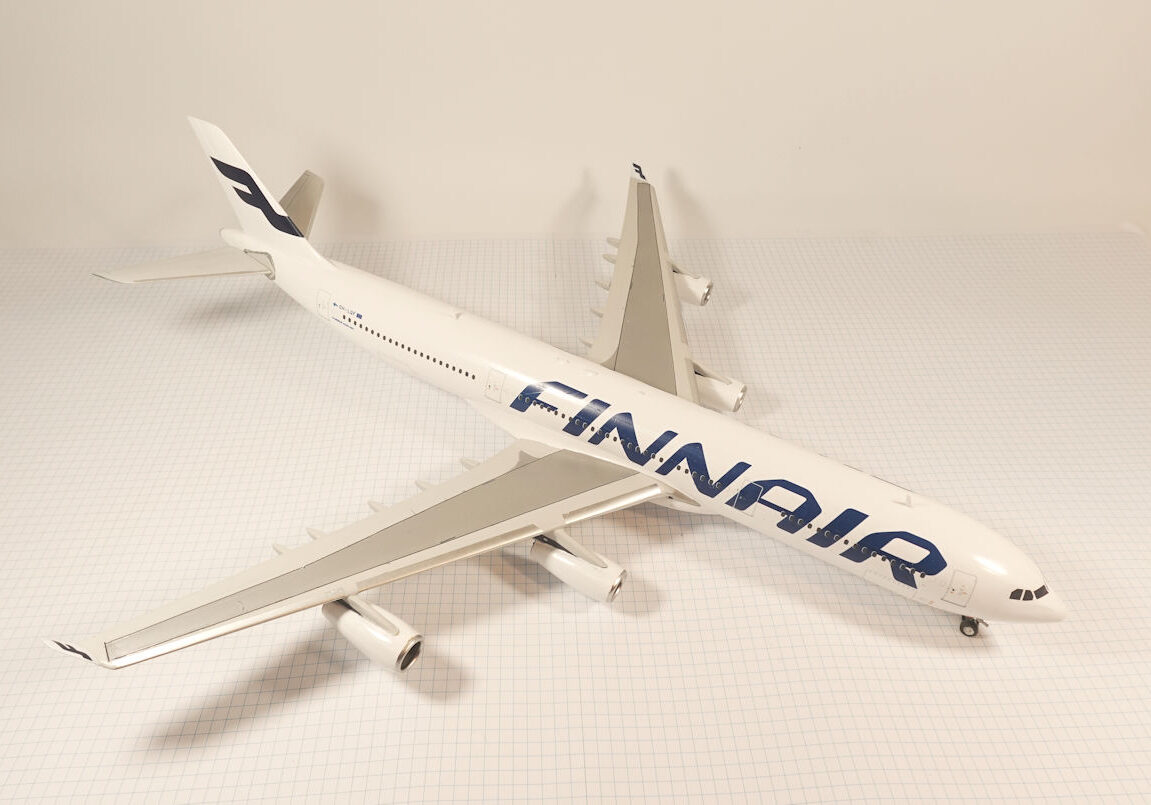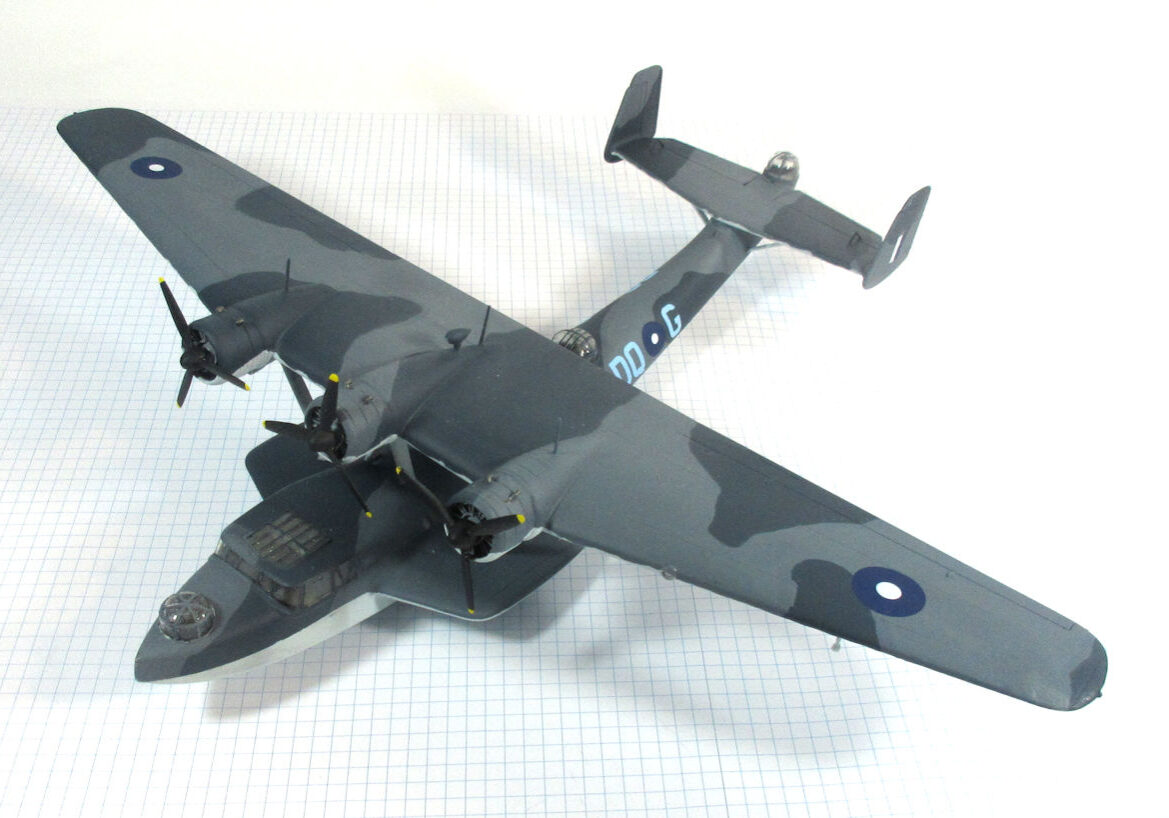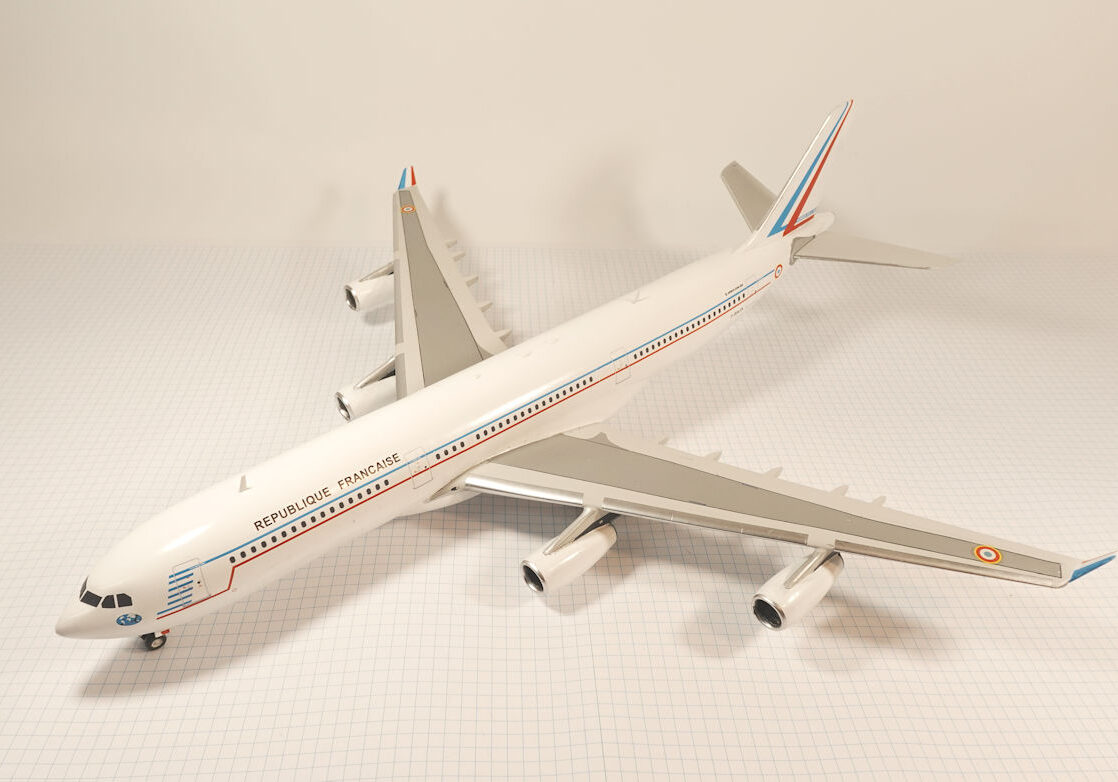History
The English Electric P.1A was a supersonic research aeroplane designed in the late 1940s and constructed in the early 1950s. It became the basis of the English Electric (later BAC) Lightning interceptor.
In May 1947 the British government issued a request for a supersonic research aircraft which led to the English Electric P.1A which had potential for further development.
The English Electric proposal was so radical for its day that another aeroplane, the Shorts SB.5, was constructed to test the severely swept wings and tail position.
Construction of three P.1As began in 1950 and the first one, WG760, made its first flight on 4 August 1954.
The second P.1A was used for static testing and the third one first flew in July 1955. By then plans to use the P.1A as the basis for a fighter was well advanced and it was fitted with cannons and other military equipment.
This model represents the first P.1A prototype, WG760, c.1955.
Trumpeter and Aeroclub 1/72 kits. Completed in June 2009. Completed in June 2009
